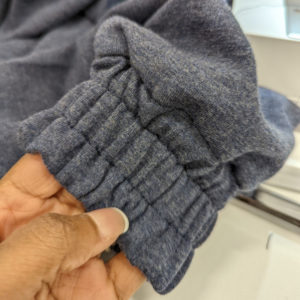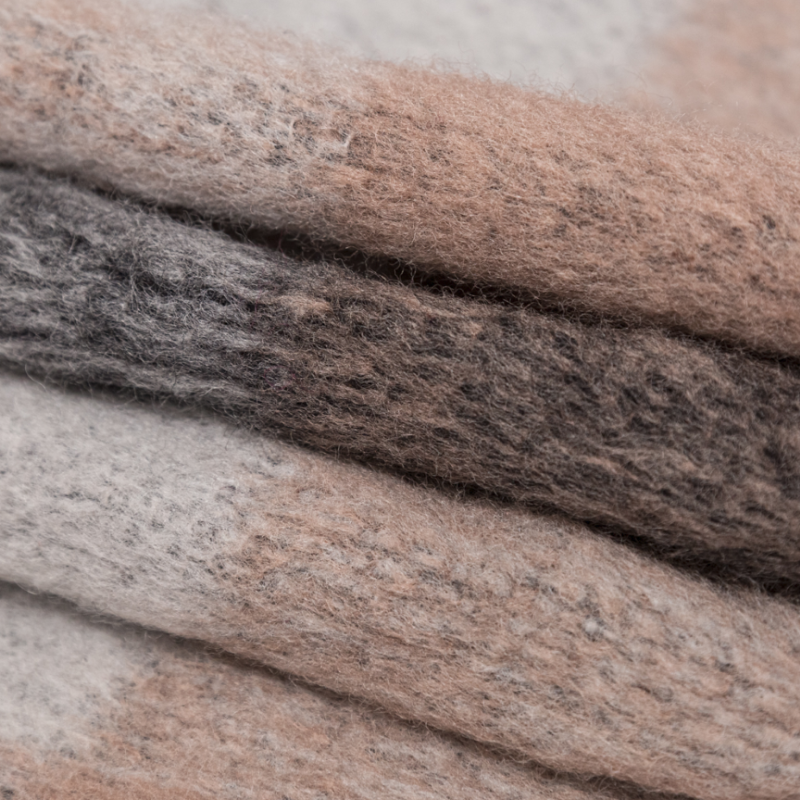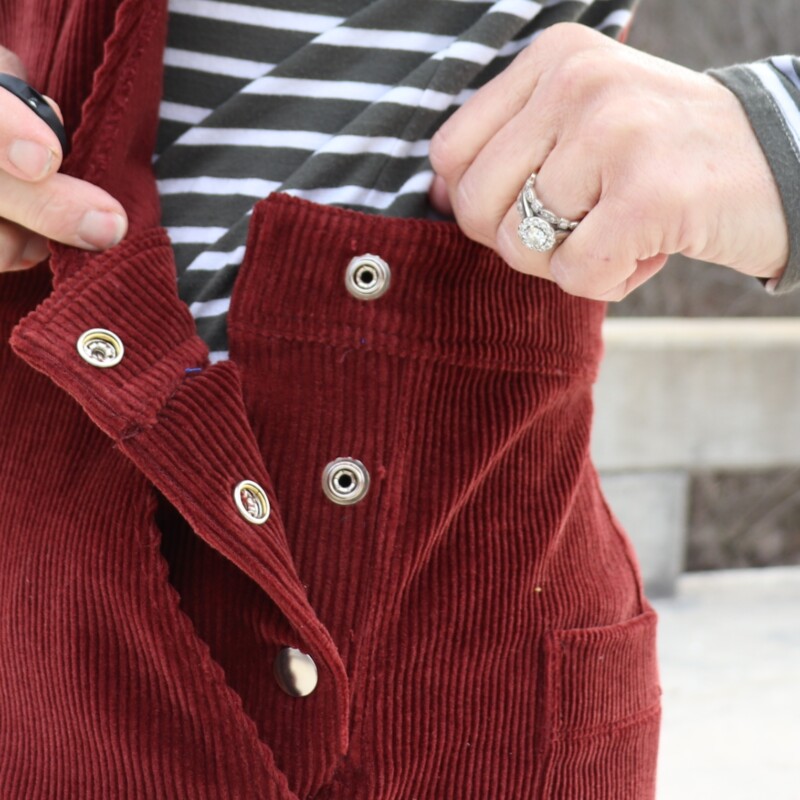Oh, to be nestled up in your favorite cozy blanket by the fire on a cold winter’s day with hot cocoa and a book in hand (which is much needed after months of watching Christmas movies). If only we could all stay in that picture-perfect scenario from morning ’til night, but since we can’t, I like to make sure I’m comfy from head to toe – starting with my clothes. The fabrics below are soft, supple, and absolute home runs for keeping me warm and comfy while the temperatures outside are less than inviting.

1. Wool
The warmest fabric of the bunch— it comes in many weights, making it perfect for many occasions. It has natural insulating and moisture-wicking properties that will definitely keep you warm. Some thicker wool may be irritating to some, but with different weights and wool types, there’s sure to be a wool variety that works for even the most sensitive skin.
2. Fleece
Looking for a wool alternative? It’s soft, warm, and cost-efficient: it ticks all the cozy boxes without breaking the bank. Fleece is made of polyester, a synthetic material. It has decent drying properties to keep you dry if you’re out on a snowy day and is lightweight enough to keep from feeling heavy and cumbersome. Sew zip-ups or jackets, hoodies, or any other cozy winter pieces with fleece to stay ultra-warm and fashionable. Opt for a slim fit to keep from looking frumpy.
3. Flannel
This brushed cotton fabric is a homerun for keeping the body warm, and it’s so soft. Flannel is a trusted fabric that practically everyone knows and owns. Flannel PJs, button-ups, nightgowns, shackets, and more are excellent choices when trying to decide if a flannel masterpiece is down your alley or not.
4. Velour
It’s soft to the touch, and that already makes this fabric a front runner for warm and cozy fabrics. Velvet also comes in a wide range of varieties and is easy to shape into form-fitting pieces or even more relaxed ones (we love versatility). 2 piece sets are the go-to for nearly everyone, and I’ve seen a lot of velour options that are really quite eye-catching.

5. Bamboo Knits
If you’re looking for a fabric that offers ultimate comfort and softness, then bamboo knits are just what the doctor ordered. Being eco-friendly and practical, there are countless ways to integrate bamboo knits into your comfy wardrobe as they offer a natural luxe feel to the skin. Bonus: it’s antibacterial, surprisingly durable, moisture-wicking, and good for the environment. Try your hand at making a sweater or a cardigan like the one linked here that combines 2 free sewing patterns to create one to-die-for piece.
6. Merino Wool
When it comes to natural fibers that pack a punch in the winter months, Merino Wool stands out as a champion. Sourced from Merino sheep, this wool is not just warm but also incredibly soft, avoiding the itch factor commonly associated with regular wool. It’s excellent at regulating body temperature, making sure you stay warm without overheating. Plus, it’s naturally anti-microbial.
7. Mohair
Mohair is often referred to as the “diamond fiber,” and it’s not hard to see why. Its luster and sheen give it a luxurious look, while its insulating properties ensure that you stay warm. Harvested from the Angora goat, mohair is resilient, durable, and softer than standard wool. It’s ideal for sophisticated winter garments like cardigans and elegant scarves.
8. Corduroy
Corduroy is making a fashion comeback, and its timing couldn’t be better. The ribbed surface of this fabric not only adds texture and interest but also traps air, providing an extra layer of insulation. Made commonly from cotton or a cotton-poly blend, it’s a sturdy fabric perfect for pants, jackets, and even stylish winter skirts. It’s a sewist’s dream, offering both structure and stretch. For a variation try wide-wale corduroy which features larger, more pronounced ridges, offering a different look but the same insulating benefits as standard corduroy.
9. Acrylic
If you’re looking for a wool substitute that doesn’t break the bank, acrylic should be on your radar. It’s a synthetic fiber that provides reasonable warmth and is often used in knitted winter accessories like hats, gloves, and scarves. While not as breathable as natural fibers, it does offer some advantages such as color fastness and machine washability. For those interested in a quick and easy winter sewing project, acrylic fabric or yarn can be an excellent place to start. Opt for bulk acrylic for a heavier, denser variant of standard acrylic, offering more warmth but less flexibility.
10. Polyester
Don’t discount synthetic fibers when considering winter clothing. Polyester offers exceptional durability, insulation, and moisture-wicking properties. While it might not offer the breathability of natural fibers, its ability to retain heat makes it a popular choice for winter sports gear and outerwear. Sewists will find it an easy-to-work-with fabric that resists wrinkles and holds its shape well. Alternatively Fleece Polyester is An excellent choice for layering, known for its insulating properties. Another option: Sherpa Polyester is designed to mimic the texture of sheep’s wool, Sherpa offers extra warmth and a different aesthetic.
At Mood, we’ve got the fabric and the free patterns to bring your comfy cozy wardrobe for winter to life. For loungewear inspo check out our free loungewear pattern roundup!









1 comment
cashmere is also a super cozy fabrics ideal for winter. actually it’s lighter and warmer than wool.